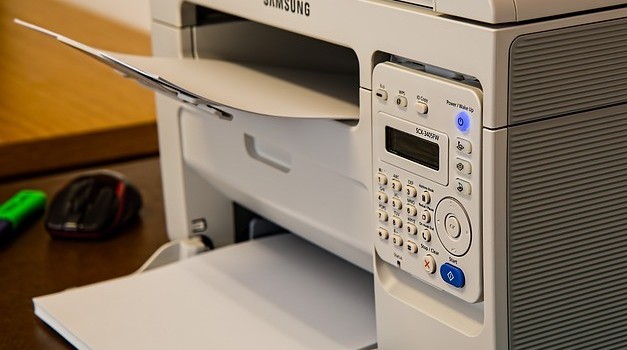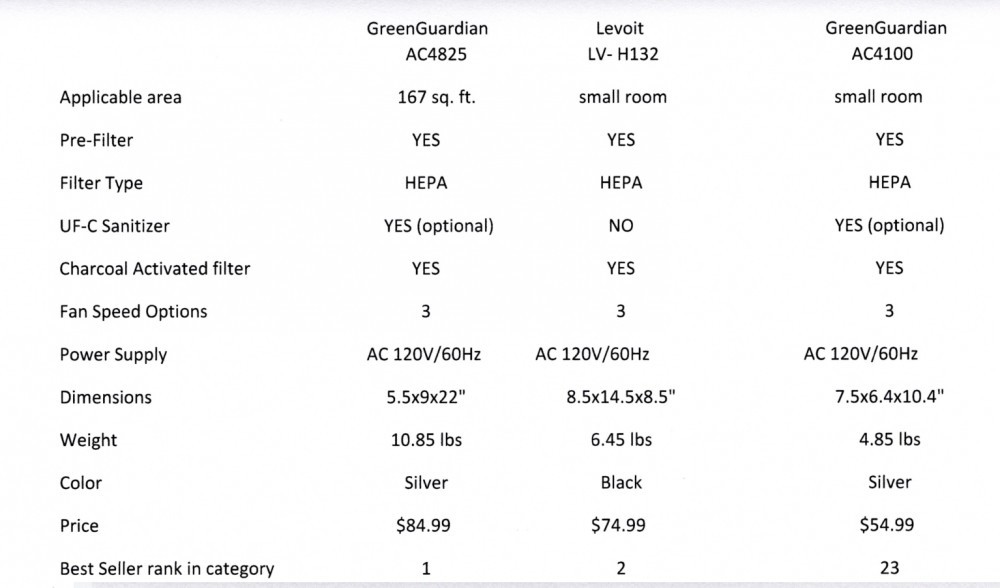
I have written before on the health risks associated with unhealthy air in our homes and how to improve indoor air quality. However, many of us spend considerable time outside our homes in our offices at work. Our work place may not have adequate air quality. In particular, scientists tell us that office equipment such as printers, fax machines and computers generate Volatile Organic Compounds (VOC)s which may not be removed by the office air conditioning system.
Furthermore, since office machines are in close proximity to the people who use these machines, both at home and in offices, their effect on health requires urgent examination.
What the Scientists tell us
Laboratory tests have detected the following harmful emissions emanating from common office equipment:
Toluene, Styrene, Benzene,Chloroform and Metyl Chloride. In addition, the ozone emitted by printers can combine with other VOCs in the room and produce harmful secondary pollutants and ultrafine aerosol particles [1]. These tests also showed that emissions from laser printers were higher than those from ink-jet printers [2].

To address this air pollution created indoors it is recommended that cool and dry clean air be introduced close to the breathing zone of each individual [3].
To comply with this recommendation it is advisable that we keep on our desk a small air purifier that will protect our personal environment. This small air purifier, suitable for areas 50 to 150 square feet, does not have to be expensive. Many low cost small air purifiers are available in the market.
Desktop Air Purifiers
To select a suitable Desktop Air Purifier we must evaluate the quality of each of the main elements of the Air Purifier.
– Pre-Filter
– Main Filter
– Carbon Activated Filter
– UFC Light (optional)
PRE-FILTER
Particulate matter (PM) air pollution is an air suspended mixture of solid and liquid particles of various sizes. Scientists classify the particles in 3 categories.
Coarse Particles – larger than 2.5 micrometer ( PM10) . Examples: dust, pollen, mold,spores,pet dander
Fine Particles – smaller than 2.5 micrometer ( PM2.5) . Examples: VOCs such as benzene, toluene and formaldehyde from smoking, cooking on gas stoves, cleaning fluids, solvents and pesticides.
Ultrafine Particles – smaller than 0.1 micrometer (included in the PM2.5 classification) Examples: vehicle exhaust gases, gases from atmospheric photochemical reactions, viruses.
The majority of the particles present in our homes or offices are large particles. These large particles can clog the main filter in the air purifier reducing its efficiency for capturing the smaller, more dangerous particles.
Therefore, it is very important that the air purifiers include a pre-filter to remove the large particles. The pre-filter should be easily removed so that it can be cleaned or replaced regularly. This will insure efficient operation of the Air Purifier.
MAIN FILTER
There are mainly two types of filters for particle collection.
– Electrostatic Precipitation Filters (ESP)
ESP’s use a high voltage wire to charge incoming particles which are then collected on charged plates inside the air cleaner. These units are mostly installed in whole house ventilation systems. We will not examine this type of filters in this article, which is aimed only at Desktop Air Purifiers.
– Fibrous Media Filters
Within this category we recommend the High Efficienct Particulate Air (HEPA) Filters. These filters are manufactured as flat pleated sheets of different thicknesses. As the air is forced through the filter the particulates are attracted and get attached to the HEPA filter fibers. The HEPA filters offer the highest available particle removal efficiency of fibrous media filters. They usually have a removal efficiency of 99% or higher. There are two methods for evaluating fibrous media filters.
a ) Efficiency Testing
The American Society of Heating, Refrigeration and Air Conditioning Engineers (ASHREA) in their standard 52.2 specify a testing method. This method measures the removal efficiency of particles sizes 0.3 to 10 micrometers in diameter. The test results are reported as Minimum Efficiency Reporting Value (MERV) numbers ranging from MERV 1 to Merv 16. The rating numbers are based on the average removal efficiency for 3 particles sizes in ranges .3 to 1 micrometers, 1 to 3 micrometers, and 3 to 10 micrometers. The better the filter the higher the MERV number. The test method is very specific.
Filters with a MERV 13 rating must remove at least 50% of the 0.3 to 1 micrometer particles. This size of particles are the most harmful of human health. The HEPA filters are equivalent to MERV 16. Many filter manufacturers display the MERV number on their filter packaging.
b ) Clean Air Flow through the Filter
When the filters are installed in a portable Air Purifier the efficiency of the Air Purifier and Filter is measured in units of Clean Air Delivery Rate (CADR). This is a measure of the Air Purifier delivery of relatively clean air, expressed in cubic feet per minute (cfm).
In comparing different Desktop Air Purifiers we should compare their HEPA filter and their CADR ratings.
CARBON ACTIVATED FILTER
Carbon Activated Filters are an additional filter that is incorporated in the best Desktop Air Purifiers to adsorb odors from pets, smoking and cooking. In some Air Purifiers the carbon activated filter is combined with the pre-filter.
UVC LAMP
A UFC lamp is an ultraviolet germicidal lamp with a wavelength of 200 to 300 nanometers (nm) used to destroy germs and viruses. The UFC light has been shown to kill airborne germs including staph, influenza and pneumonia. One of the recommended Desktop Air Purifiers incorporates a photocatalyst TiO2 activated by the UFC light and combined with an activated carbon filter. This combination is reported to increase the pollutant removal efficiency and also to reduce the amount of secondary VOCs [4].
Although many scientists believe that UVC rays are not harmful to humans, there are others who differ from this opinion. It is possible to select a Desktop Air Purifier that includes an UFC lamp but the lamp can be turned off. So use of the UFC lamp can be optional. Or it could be used during business off hours when people are not present.
Comparison of 3 Excellent Desktop Air Purifiers

Conclusion
We must take the steps necessary to ensure that our environment is healthy. Clean indoor air is our individual responsibility, at home or in the office. I encourage you to look into Desktop Air Purifiers to improve your personal environment.
For details on the Air Purifier I recommend click here
References
[1] Hugo Destaillats et al. “Indoor pollutants emitted by office equipment”.A review of reported data and information needs. Lawrence Berkeley National Laboratory, Environmental Energy Technologies Division.January 2007,LBNL-62082
[2] S.C.Lee,Sanches Lam,Ho Kin Fai.” Characterization of VOCs,ozone,and PM10 emissions from office equipment in an environmental chamber”.Department of Civil and Structural Engineering, The Hong Kong Polytyechnic University,Hong Kong. Building and Environment 36(2001)837-842
[3] P.Ole Fanger. “Indoor Air Quality in the 21st. Century Search for Excellence”. Indoor Air/Volume 10, Issue 2,December 2001. Study from the Technical University of Denmark.
[4] C.H.Ao,S.C.Lee. ” Indoor air purification by photocatalyst TiO2 immobilized on an activated carbon filter installed in an air cleaner.” Department of Civil and Structural Engineering.The Hong Kong Polytechnic University.Chemical Engineering Science. 60(2005)103-109

Carlos
carlos@improvingindoorairquality.com
Great article about air purifiers. I couldn’t help but notice one statement with regards to the safety of our office equipment. Did you just say that they emit harmful emissions? Were the manufacturers aware of these side effects when they made their creations available to the entire public? Now that I’ve come across your article, I’ve become very worried about my health status because I’ve been exposed to a lot of these equipment for as long as I can remember. So what do these emmissions do to our health actually? And are there products to counter the damage already caused?
Thank you Laurine for your comment. I share your concern about the long term effect of exposure to these pollutants.Specially dangerous are the ultrafine particles because they can travel from our lungs to our bloodstream. The problem is that there are no standards universally accepted as to what amount of these pollutants can be emitted. The EPA prohibits equipment that purposely creates ozone and are sold as air cleaners, but they have not set limits as to how much can be released as a by product of the process.For example laser printers work by using high voltage to do the printing.The resulting corona effect produces a small amount of ozone.How much is too much? Nobody knows. We are individually responsible for the indoor air quality in our homes and work places. Do not hold your breath waiting for the Government to set the rules.You may find more details on the health risks in my article https://improvingindoorairquality.com/healthrisks
I think this indoor airborne pollutants should also be discussed in office meetings to tell the management that this health issue shouldn’t be neglected. Employees can request so it can be purchased and be used to eliminate allergens that can trigger asthma or any disease.It’s very alarming that your office where you work to fulfill your duties, can and may kill you because of pollutants. This thing can be prevented if someone would speak up. But if it’s too embarassing then have the responsibility to buy it at least for yourself. I am gonna print this and have it shared in our meeting on health concerns. Thank you dor sharing this great info.
It is so disheartening seeing that many health conditions we faced is as a result of our day-to-day activities. What the heck! There is no where one can stay without being exposed to one kind of harmful chemicals or others. No wonder, people lived longer during the ancient period than this modern time. To ensure our safety, airpurifier would be the best. The best among them all is now a concern. I don’t have a clear mind with desktop purifier with UVC but am glad you stated how it can be used without creating awful side effects. This is a very educating review that worth revisiting. If many companies can adopt the use of airpurifier in their offices, it would be a great help for people working long hours in the office.
Thank you for your comment.I would add that it is not enough to wait for companies to provide employees with air purifiers.Our health is our individual responsibility. We should bring to the office our own small desktop air purifier and keep it on our desk to keep our personal space healthy. Good ventilation is also important.Learn more on https://improvingindoorairquality.com/ventilation
Dear Carlos,
I thoroughly appreciate the research you must have done to gather and compile so much information. This is one of the most excellent and well detailed article I’ve read lately on Desktop Air Purifiers.
I am a full-time blogger working from home and I spend 12+ hours per day in-front of my computer. Information you shared about Volatile Organic Compounds certainly made me think more on the subject. You not only discussed the problem but you have provided with the solution as well which is very helpful.
The Details you shared on each of the main element of Desktop Air Purifiers is informative and educational. The Comparison table is super helpful in making my purchase decision and LEVOIT LV-H132 is on my list. Indeed, in this polluted environment clean indoor air is our individual responsibility.
Much Success!
Paul
Hello Paul, Thank you for your kind comment. We both agree that we are individually responsible for our own healthy environment indoors. In addition we should insure that we have sufficient ventilation which is also another problem resulting from green buildings that emphasize energy savings at the expense of clean air. You can find more about ventilation standards at: https://improvingindoorairquality.com/ventilation.